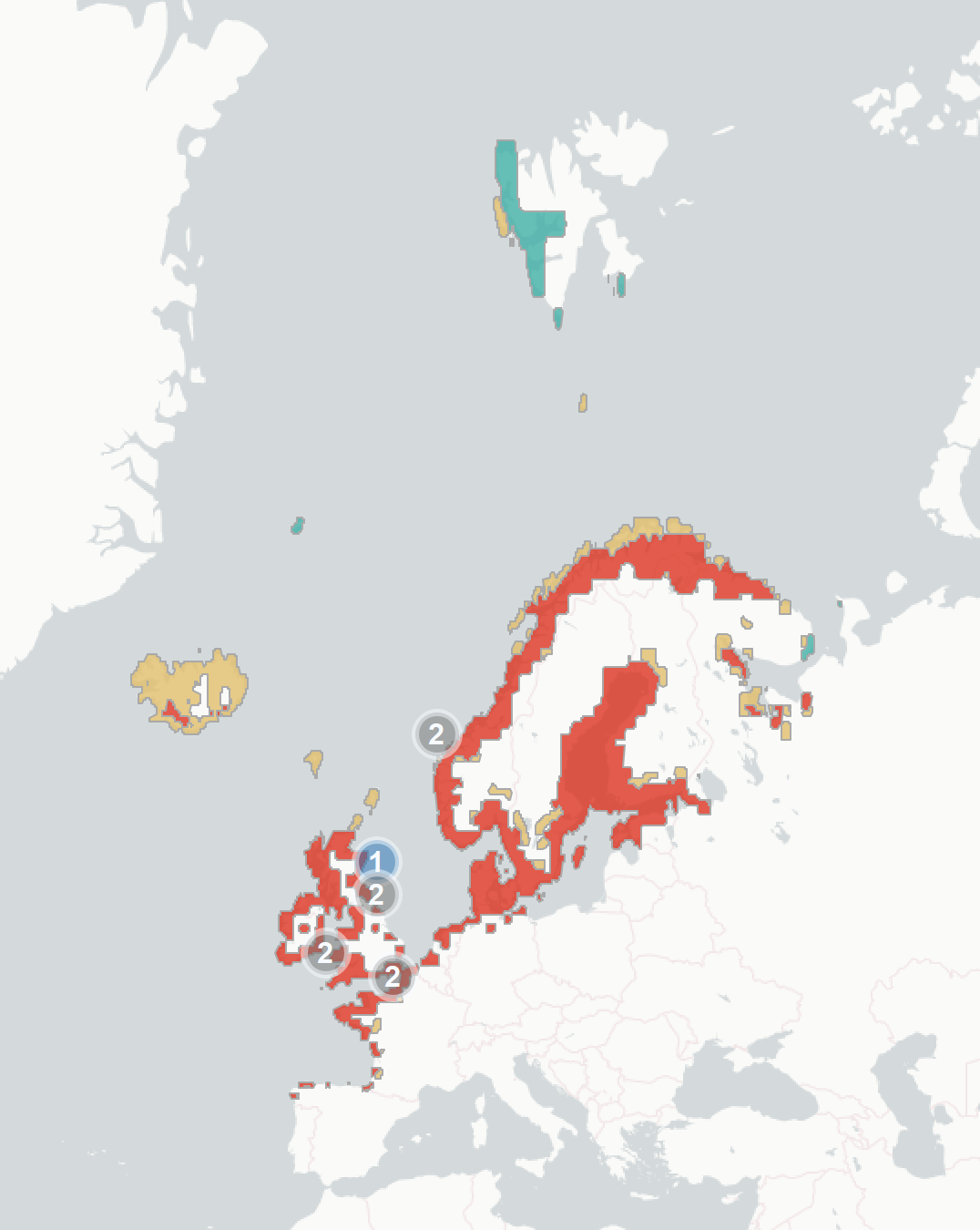Great Black-backed Gull (Larus marinus): vulnerability to climate change
Evidence for exposure
Potential changes in breeding habitat suitability:
-
Current breeding area that is likely to become less suitable (70% of current range)
-
Current breeding area that is likely to remain suitable (26%)
-
Current breeding area that is likely to become more suitable (4%)
Current impacts to Great Black-backed Gulls attributed to climate change:
-
Negative Impact: Higher sea temperatures correlate with lower breeding success. Mechanism unknown, but likely mediated through prey availability
Predicted changes in key prey species:
-
Key prey species are likely to decline in abundance in the Irish Sea, as well as along the Norwegian coast, southern coast of the UK and the Brittany Coast.
Sensitivity
-
Greater black-backed gulls are declining in areas of the eastern Atlantic, likely due to to reductions in fishing discards. Any additional impacts, such as from climate change, are likely to exacerbate this decline.
-
This species has a long generation length (>10 years), which may slow recovery from severe impacts and increases population extinction risk
Adaptive capacity
-
Extremely variable diet, and able to exploit many available food sources. This is likely to make great black backed gulls more resilient to climate change, but note that many individual populations are specialised and are highly reliant on one or a few sources of food (e.g. human discards). Plasticity is therefore likely to vary across populations.
-
Great black-backed gulls have historically shown range expansions when pressures have been alleviated, there is evidence they can colonise or re-colonise areas if new areas are particularly high-quality or if previous areas are disturbed.
-
Great black backed gulls occasionally use urban habitats and resources, which may buffer populations if natural diet or habitat is limited.
